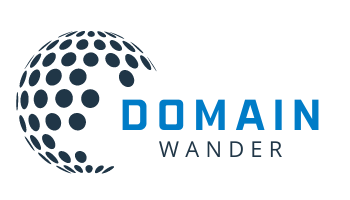
Introduction to Domain Backordering
Domain backordering is a service provided by domain name registrars that allows individuals to register an interest in a domain name that is currently owned by someone else, but is nearing the end of its registration period. When a domain name is backordered, the service provider will attempt to register the domain on behalf of the client the instant it becomes available. This service is particularly critical for acquiring domain names that hold significant value in terms of SEO, brand identity, or are in high demand due to their simplicity and memorability.
The importance of domain backordering cannot be overstated in today's digital-first business environment. A domain name often serves as the first point of contact between a business and its customers, and the right domain name can set the tone for the business’s online presence. Domain backordering provides a second chance at securing a perfect domain name that was previously taken, which can be a pivotal factor in a brand’s online strategy.
To understand how domain backordering works, one must be familiar with the domain lifecycle, which includes several stages:
- Active Registration: This is the period when a domain is currently registered and in use. Depending on the registrar and the terms agreed upon, registration periods can last anywhere from 1 to 10 years.
- Expiration: When a domain registration period ends, it doesn't become immediately available. Instead, it enters an expiration period where the current registrant may still renew the domain, often with additional fees.
- Grace Period: Following expiration, there is typically a grace period. This duration allows the original registrant a final opportunity to renew their domain, often without penalty. The length of this period can vary, but it is commonly around 30 days.
- Redemption Period: If a domain is not renewed during the grace period, it then enters a redemption phase. This is usually the last chance for the original owner to reclaim the domain, albeit with a higher redemption fee. This period also typically lasts for around 30 days.
- Pending Delete: After the redemption period, if the domain is still not renewed, it enters a 'Pending Delete' phase. During this time, which lasts about 5 days, the domain cannot be renewed or registered, and it is queued for deletion from the registry.
- Availability: Once the pending delete phase ends, the domain name is finally released and becomes available for registration by the general public.
Domain backordering is primarily focused on the final stages of this lifecycle. By placing a backorder, a potential new registrant is essentially waiting for the domain to pass through the expiration, grace, and redemption periods to attempt to secure it before it hits the open market, where it can be claimed by anyone else on a first-come, first-serve basis. Given the automated nature of the process and the competition for valuable domain names, the effectiveness of a backorder can often depend on the speed and efficiency of the backordering service’s technology as well as the timing of the backorder placement.
The Role of Domain Registrars
In the context of domain backordering, registrars play a pivotal role. They are the organizations or commercial entities that manage the reservation of internet domain names. A registrar must be accredited by a generic top-level domain (gTLD) registry and/or a country code top-level domain (ccTLD) registry.
Functions and Responsibilities
Domain registrars have several key functions and responsibilities:
- Registration: Registrars facilitate the registration of domain names. They provide a platform for customers to choose a domain name and register it for a specific period.
- Renewal and Expiry Management: Registrars manage the renewal process, sending reminders to domain owners, and handling the domain expiry process if the domain is not renewed.
- Record Maintenance: They maintain records of domain registrations and ensure that the necessary DNS records are in place and propagated throughout the internet.
- Customer Service: Registrars provide customer service to domain owners, assisting with changes to domain registration records, transfers, and other technical issues.
Handling of Expiring Domains
When a domain is about to expire, registrars have a standardized process for handling these domains:
- Notification: As a domain approaches its expiration date, registrars typically notify the registrant multiple times to remind them to renew.
- Expiration: If the domain is not renewed by the end of the registration term, it enters an expiration status, where the website and associated services may cease to function.
- Grace Period: Registrars generally offer a grace period during which the original domain owner can renew the domain at the regular renewal price.
- Redemption Period: Following the grace period, the domain enters a redemption period where it can still be reclaimed by the original owner, but often at a higher cost.
- Deletion: If the domain is not reclaimed, it is then scheduled for deletion.
During these stages, especially once the domain enters the redemption period, backordering services can begin to play their part.
Strategies for Successful Backordering
Successfully backordering a domain requires a well-thought-out strategy, combining research, timing, and the effective use of technology. Here’s a breakdown of the strategies that can enhance your chances of acquiring a desired domain through backordering:
Research and Targeting Domains
Identification and Valuation of Domains
The first step in domain backordering is identifying potential domains that are valuable to you or your business. Tools like domain appraisal services, search volume analysis, and competitive landscape assessments are crucial. Assess the domain's worth based on factors such as domain age, keyword relevance, domain authority, and brandability.
Timing for Backordering
The timing of placing a backorder is critical. You need to monitor the expiration date of the domain and place a backorder before the domain enters the pending delete phase. Keeping track of the domain through its lifecycle stages is vital, as the exact time a domain drops can be unpredictable.
Multiple Backorders
Strategy for Placing Multiple Backorders
Don’t limit yourself to backordering a single domain, especially if it's a common or desirable name. Spread your risk by backordering similar domains or various domains that could suit your needs. This increases the chances of securing at least one desired domain.
Portfolio Management
Managing a domain portfolio involves keeping track of renewal dates, the performance of each domain, and the overall investment in backordered domains. Good portfolio management ensures you are maximizing the return on your domain investments and not losing domains inadvertently through missed renewals.
Understanding Auction Systems
Auction Mechanics
If multiple backorders are placed on a domain, it will often go to auction. Understanding how these auctions work, including the bidding process, the auction duration, and the payment process, is essential.
Bidding Strategies
Develop a strategy for auctions, such as deciding on a maximum bid for a domain based on its assessed value. Be ready to participate in the auction towards its end to avoid early overbidding and driving up the price.
Case Studies of Auctions
Review case studies and past auctions to understand winning strategies and common pitfalls. Learning from the successes and failures of others can provide valuable insights for your auction approach.
Utilizing Automated Tools
Advantages of Automation
Automation tools can monitor a domain's status, place backorders at the optimal time, and participate in auctions on your behalf. These tools can act faster than manual methods, increasing the likelihood of successful backordering.
Setting Up Automated Bids
Configure automated bids to engage in auctions without constant monitoring. This includes setting maximum bids to ensure you stay within your budget.
Domain Status Monitoring
Automated monitoring services can track the status of domains through various stages of expiration and alert you to any changes, allowing you to act swiftly when a domain becomes available.
Legal Considerations
Trademark and Cybersquatting Laws
Be aware of trademark laws to avoid legal issues with backordered domains. Cybersquatting, or registering a domain with the intent to profit from someone else's trademark, can lead to legal disputes and loss of the domain.
Domain Disputes Resolution
Familiarize yourself with the Uniform Domain-Name Dispute-Resolution Policy (UDRP) and other legal avenues for resolving domain disputes. In case of a dispute, these channels can provide a means to claim ownership or defend your rights to a domain.
Domain backordering is a great way to grow your domain portfolio and profit. By following the right strategies, you can increase your chances of acquiring valuable domains that you can sell at a premium or use to build a successful website.
